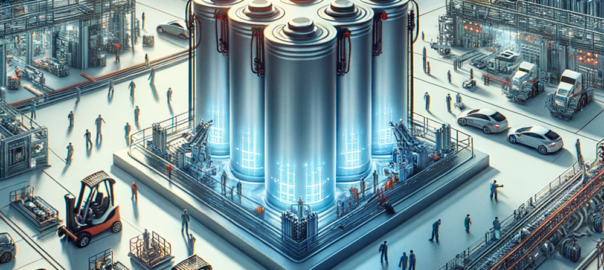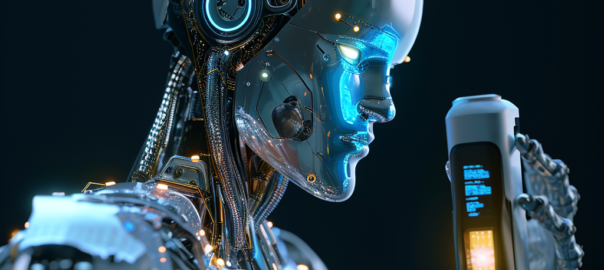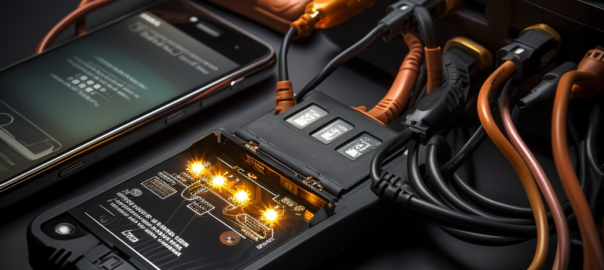In today’s fast-paced world, we often overlook the power—quite literally—that keeps our lives moving. Whether it’s your smartphone buzzing with a new notification or an electric vehicle whisking you away to your next destination, batteries play a vital role. Yet, as essential as they are, traditional batteries have long had limitations: lifespan, charge time, and sustainability, among others. Enter China, a burgeoning superpower taking considerable strides in pushing the envelope of battery technology.
The buzz around batteries isn’t new. Researchers and corporations worldwide have been racing to make breakthroughs. So, why focus on China? Simply put, the country has become a hotbed for innovation in this space, spearheading research and development that could redefine how we power our future.
China isn’t just riding the wave; they are creating the wave, complete with government support, enormous investment, and an army of skilled researchers. This article aims to dive deep into China’s burgeoning role in advancing battery technology, discussing the current landscape, companies that are leading the charge , and what this could mean for our future.
Contents
The Current State of Battery Technology
Types of Batteries Available Today
In the arena of energy storage, different types of batteries have been competing for dominance. The most prevalent is the Lithium-ion (Li-ion) battery, often found in consumer electronics and electric vehicles. These batteries offer high energy density and long cycle life, but they also come with their share of drawbacks, such as sensitivity to high temperatures and potential safety hazards.
Nickel-Metal Hydride (NiMH) and Lead-Acid batteries are other common types but are generally considered less advanced than Li-ion. They are often used in applications where high energy density isn’t a primary concern, like emergency lighting and backup power.
Traditional Lithium-ion vs. New Technologies
Li-ion batteries have been the gold standard for years, but even they have limitations—capacity, charge time, and potential for thermal runaway (overheating), to name a few. Recently, the industry has seen a surge in promising new technologies like solid-state batteries and lithium-sulfur batteries. These newcomers boast higher energy densities, quicker charge times, and improved safety profiles, making them attractive options for the next generation of electric vehicles and portable electronics.
But why are these new technologies critical? The answer lies in the demands of our ever-advancing world. For electric vehicles to replace their gasoline counterparts, they need batteries that can deliver both range and reliability. Similarly, as consumer electronics become more sophisticated, so does their need for efficient, long-lasting power sources.

China’s Role in Advancing Battery Technology
Government Initiatives
China is not merely a participant in the race for battery supremacy; it’s aiming to be the pacesetter. To understand this drive, it’s essential to look at government involvement. China’s “Made in China 2025” strategy explicitly targets high-tech fields, including new energy vehicles (NEVs) and by extension, batteries. Subsidies, grants, and favorable policies have paved the way for Chinese firms to make remarkable leaps in research and development.
Leading Companies and Their Contributions
Several Chinese companies are turning heads in the global arena. CATL (Contemporary Amperex Technology Co. Limited), for instance, has risen to become the world’s largest supplier of electric vehicle batteries. Not to be outdone, BYD (Build Your Dreams), another Chinese giant, has been innovating with its blade battery technology, challenging the existing Li-ion market.
These companies are not merely manufacturing at scale but are deeply invested in R&D. In 2020 alone, CATL committed about $2.3 billion to research and development, a significant figure even in the well-funded tech industry.
The Drive for Innovation
But what propels this innovation? It’s not just about national pride or economic advantage. It’s also about addressing the grand challenges humanity faces—climate change, energy security, and sustainable development. With its vast population and rapid industrialization, China has a unique set of energy demands and environmental concerns. By pioneering advancements in battery technology, the country positions itself not only as an industry leader but also as a solution provider on the global stage.
Challenges and Opportunities
Safety Concerns
With new technology comes the onus of proving its safety. Traditional Li-ion batteries have sometimes faced scrutiny due to incidents of overheating or even explosions. While companies like CATL and BYD tout the enhanced safety profiles of their latest innovations, rigorous testing is essential. Meeting international safety standards is not just a matter of compliance; it’s vital for consumer trust and global market adoption.
Environmental Impact
Another point of concern is the environmental sustainability of these new technologies. The mining of lithium and other rare earth metals poses significant environmental risks, from soil degradation to water pollution. As China steps up its battery game, it also has to reckon with the environmental impact and work towards sustainable practices in sourcing materials and recycling used batteries.
Economic Implications
The opportunities are immense. The global battery market size was valued at approximately $108.4 billion in 2019 and is expected to grow exponentially. China’s advancements can potentially reshape global trade dynamics, challenge existing monopolies, and offer more cost-effective solutions to consumers worldwide.
The Balancing Act
It’s a complicated juggling act: stimulate innovation, ensure safety, minimize environmental damage, and seize economic opportunities. Yet, this is the intricate balance that China and its companies must maintain as they push the envelope in battery technology.
Case Studies: Companies Pushing the Envelope
CATL: Leading the Pack
Contemporary Amperex Technology Co. Limited, commonly known as CATL, is a name that stands out in the conversation around advanced batteries. Established in 2011, CATL skyrocketed to become the world’s largest manufacturer of electric vehicle batteries by 2018. Their crown jewel is the NCM 811 battery, featuring a nickel-cobalt-manganese ratio that maximizes energy density while minimizing costs.
But they’re not stopping there. CATL announced plans to build a $5 billion battery factory in Germany, further cementing its commitment to lead on a global scale.
BYD: More Than Just Cars
BYD, initially known for its electric vehicles, is another key player in the Chinese battery landscape. Their innovative “blade battery,” a type of lithium iron phosphate battery, is an example of how BYD is pushing boundaries. With a higher energy density and a unique design that enhances safety, this battery could redefine what’s expected from electric vehicle power storage.
In 2020, BYD also became a notable exporter of batteries to other countries, marking a significant milestone in its evolution from an automaker to a comprehensive green energy solutions provider.
Others: Emerging Players
It’s not just these giants in the field. Smaller firms like Svolt and CALB (China Aviation Lithium Battery) are also making impressive strides. For example, Svolt is working on cobalt-free lithium-ion batteries, a path toward both cost reduction and increased sustainability.
The Future Outlook
Upcoming Technologies
While today’s advancements are indeed exciting, they are but a prelude to what’s to come. Research into solid-state batteries, which promise even higher energy densities and quicker charging times, is particularly promising. Similarly, lithium-air and lithium-sulfur batteries are also under investigation for their potential to revolutionize the energy storage landscape.
Market Projections
According to a report by Grand View Research, the global lithium-ion battery market size is expected to reach $115.98 billion by 2027, growing at a CAGR of 13.2% from 2020 to 2027. Given China’s ongoing commitment to R&D and manufacturing, there’s a high likelihood that Chinese companies will occupy a significant share of this market.
Global Impact
China’s leadership in battery technology doesn’t just benefit China; it has a ripple effect globally. Accelerated innovation in this space can significantly influence the pace at which the world transitions to more sustainable forms of energy, affecting everything from electric vehicles to renewable energy storage solutions. The entire planet stands to gain from breakthroughs made within China’s borders.

Conclusion
In the crucible of technological progress, China has emerged as a catalyst for change in the field of battery technology. From government-backed initiatives to industry behemoths like CATL and BYD innovating at breakneck speeds, the country has secured its place as a global leader in this sector. However, as with any technological advancement, challenges such as safety, environmental impact, and economic implications loom large. Balancing these factors is crucial as China steps into a future that it is not only shaping but also sharing with the world.
The pathway to that future is electrifying, fraught with challenges but also glowing with opportunities. As we look forward to more efficient, long-lasting, and safer batteries, it’s clear that Chinese firms will be at the forefront of many of these advancements. Their work is not just a series of corporate achievements but a broader contribution to global sustainability and energy security.
So the next time your smartphone buzzes with life or an electric car glides silently down the road, take a moment to consider the monumental shifts in technology and innovation that made it possible. And remember, a significant part of that story is being written in China, one battery at a time.










